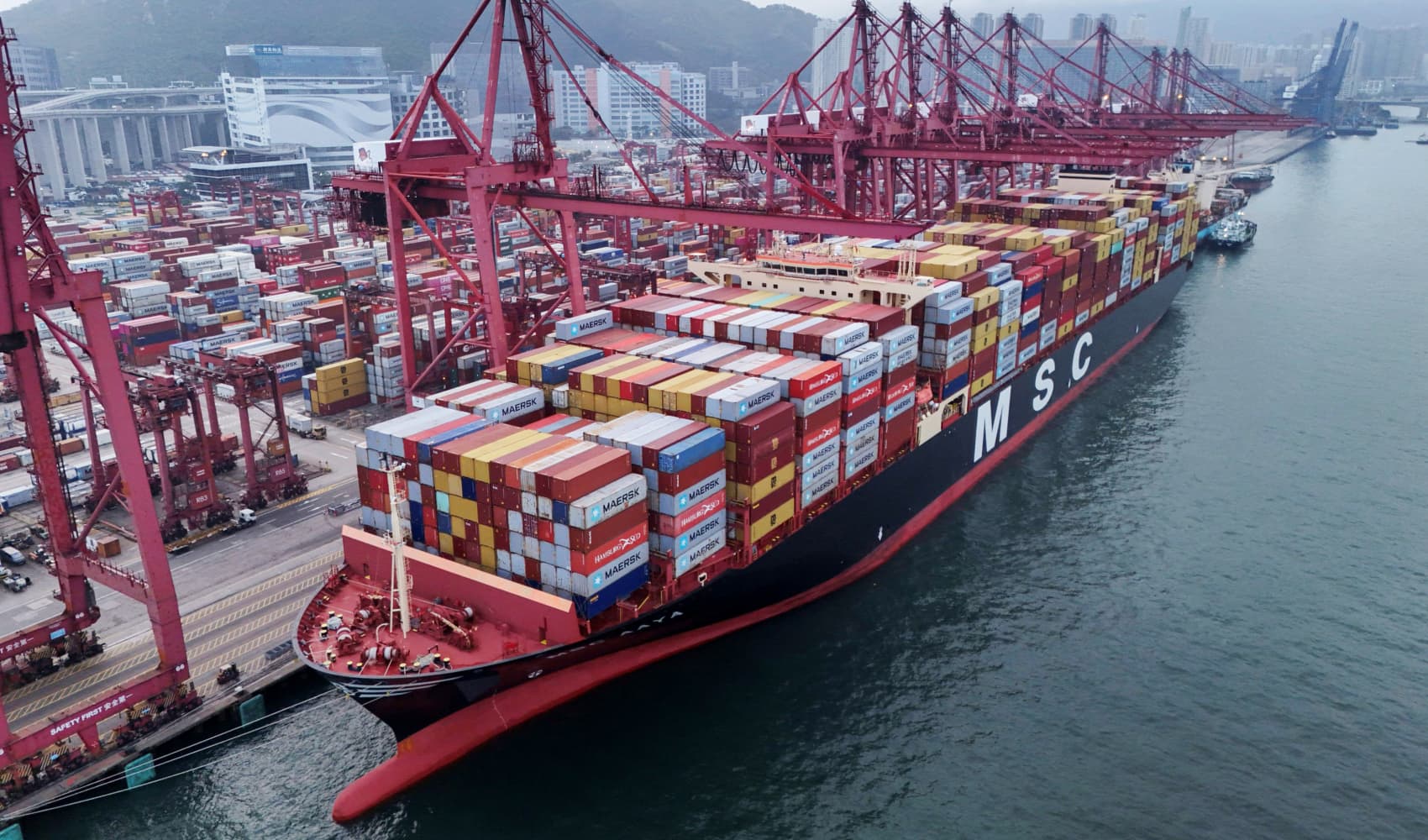Hasbro CEO's Tariff Plan: 4 Ways They're Adapting Now!
Tariff Tussle: How Hasbro's Making Rapid Moves to Beat the Trade War Blues
Introduction: Game On! Hasbro's Supply Chain Shuffle
The world of toys might seem all fun and games, but behind the scenes, it's a serious business, especially when global trade tensions come into play. Imagine trying to build a LEGO castle when some of the bricks are suddenly much more expensive or harder to find. That's the kind of challenge Hasbro, the giant behind beloved brands like Transformers, Monopoly, and My Little Pony, is facing. President Trump's tariff hikes on China, a major manufacturing hub for Hasbro, have thrown a wrench into the toy maker's supply chain. But fear not, toy lovers! Hasbro isn't just sitting back and letting the trade winds blow them over. They're making some serious, "rapid changes," as CEO Chris Cocks himself stated in a recent interview with CNBC's Jim Cramer.
The CEO's Take: Speeding Up the Escape from China
So, what exactly are these "rapid changes" Cocks is talking about? Let's dive into the details. According to Cocks, Hasbro was already planning to diversify its sourcing and reduce its reliance on China. Their original goal was to have 40% of their global sourcing outside of China by the end of 2026. But the tariffs have accelerated that timeline. It's like planning a leisurely stroll but then suddenly realizing a bear is chasing you – you're going to pick up the pace!
The 40% Target: A Race Against Time
Hitting 40% might seem like a specific number, but it signifies a huge shift in Hasbro's global manufacturing strategy. This isn't just about finding cheaper labor; it's about mitigating risk, building resilience, and ensuring a stable supply of toys for all the kids (and adults!) who crave them.
Diversification: Not All Eggs in One Basket
The key here is diversification. Think of it like your investment portfolio – you don't want to put all your money in one stock, right? Similarly, Hasbro doesn't want to rely solely on one country for its manufacturing. Diversifying the supply chain means spreading production across multiple countries, reducing the impact if one country faces tariffs, political instability, or other disruptions.
Beyond China: Where Else is Hasbro Looking?
Where are these alternative manufacturing hubs? While Hasbro hasn't revealed all its cards, common alternative sourcing locations for toy manufacturing include countries in Southeast Asia, such as Vietnam, India, and Mexico. These countries offer a combination of competitive labor costs, improving infrastructure, and proximity to key markets.
The Tariff Impact: A Real-World Cost
Let's be clear: tariffs aren't just abstract economic concepts. They have a real-world impact on businesses and consumers. When tariffs are imposed on goods imported from China, it increases the cost of those goods. This added cost can be absorbed by the manufacturer, passed on to retailers, or ultimately paid by consumers in the form of higher prices. Imagine your favorite action figure suddenly costing $5 more – that's the potential impact of tariffs.
Passing on the Costs: A Balancing Act
Companies like Hasbro have to carefully balance absorbing the tariff costs versus passing them on to consumers. Absorbing the costs can eat into profit margins, while raising prices can hurt sales. It's a delicate balancing act that requires careful consideration of market conditions and consumer demand.
Supply Chain Resilience: Building a Fortress Against Disruption
The tariff situation highlights the importance of supply chain resilience. A resilient supply chain is one that can withstand disruptions, whether they're caused by tariffs, natural disasters, or pandemics. Building resilience involves diversifying sourcing, developing strong relationships with suppliers, and investing in technology to track and manage the supply chain.
Technology's Role: Visibility and Control
Technology plays a crucial role in building a resilient supply chain. Advanced analytics, artificial intelligence, and blockchain can provide greater visibility into the supply chain, allowing companies to identify potential risks and respond quickly to disruptions.
Innovation in Manufacturing: More Than Just Cheaper Labor
Diversification isn't just about finding cheaper labor; it's also about finding innovative manufacturing solutions. This might involve exploring new technologies, automating production processes, or partnering with suppliers who can offer specialized capabilities. Think of it as upgrading your toy factory to be faster, smarter, and more adaptable.
Automation and Robotics: The Future of Toy Making?
Automation and robotics are increasingly playing a role in manufacturing, allowing companies to improve efficiency, reduce costs, and enhance quality. While robots aren't likely to replace human workers entirely, they can perform repetitive tasks, freeing up workers to focus on more complex and creative activities.
The Consumer Perspective: Will Your Toys Cost More?
The big question on everyone's mind: will all of this mean more expensive toys? It's a valid concern. As Hasbro navigates these tariff challenges and restructures its supply chain, it's possible that some of those costs could trickle down to consumers. However, Hasbro will likely try to minimize price increases by improving efficiency, negotiating with suppliers, and exploring alternative materials.
A Call for Consumers to Advocate
Ultimately, consumers have the power to influence the choices that companies like Hasbro make. By advocating for fair trade policies, supporting sustainable manufacturing practices, and demanding transparency, consumers can help shape the future of the toy industry.
Government Influence: More Than Just Tariffs
It's not just about tariffs, but the overall geopolitical climate. Government policies, trade agreements, and international relations all play a significant role in shaping the business landscape. Companies like Hasbro need to stay informed about these developments and adapt their strategies accordingly.
Navigating the Political Maze: A CEO's Headache
Being a CEO of a global company often means navigating a complex political maze. It requires understanding different cultures, respecting local laws, and building relationships with government officials. It's a challenging but essential part of the job.
Long-Term Strategy: Playing the Long Game
Hasbro's move isn't a short-term fix; it's about playing the long game. By diversifying its supply chain and investing in innovation, Hasbro is positioning itself for long-term success in a rapidly changing global market. This isn't just about surviving the current tariff situation; it's about thriving in the future.
Sustainability Initiatives: Building a Better World
As Hasbro restructures its supply chain, it also has an opportunity to prioritize sustainability. This might involve sourcing materials from sustainable sources, reducing waste, and minimizing its environmental impact. Building a more sustainable supply chain is not only good for the planet but also good for business.
The Competitive Landscape: Staying Ahead of the Game
Hasbro isn't the only toy company facing these challenges. The entire industry is grappling with the impact of tariffs and the need to diversify supply chains. Companies that can adapt quickly and effectively will be the ones that thrive in the long run.
Mattel and Beyond: A Whole Industry Adapting
While Hasbro is in the spotlight here, it's important to remember that companies like Mattel (the maker of Barbie and Hot Wheels) and other toy manufacturers are also making similar adjustments to their supply chains. The whole industry is adapting to the new reality of global trade.
Conclusion: Hasbro's Transformation: A Model for Adaptability
In conclusion, Hasbro's response to the tariff situation is a prime example of how companies can adapt and thrive in a challenging global environment. By accelerating its diversification efforts, investing in innovation, and prioritizing supply chain resilience, Hasbro is not only mitigating the impact of tariffs but also positioning itself for long-term success. The key takeaways are clear: be proactive, embrace change, and never stop innovating. The world of toys might be fun, but the business behind it is serious, strategic, and constantly evolving.
Frequently Asked Questions
- Why is Hasbro moving production out of China?
Hasbro is diversifying its supply chain to reduce its reliance on China due to tariff hikes imposed by the US government and the desire for greater supply chain resilience. - What percentage of production does Hasbro plan to move out of China?
Hasbro aims to have 40% of its global sourcing outside of China, and it expects to reach this goal sooner than its original target of 2026. - Will these changes affect the price of Hasbro toys?
It's possible that prices could be affected, but Hasbro is working to minimize price increases by improving efficiency and negotiating with suppliers. - What other countries are Hasbro considering for manufacturing?
While specific countries haven't been publicly disclosed, likely locations include Vietnam, India, and Mexico, given their competitive labor costs and improving infrastructure. - How does this supply chain shift benefit consumers?
A more diversified supply chain makes Hasbro more resilient to disruptions, which ultimately helps ensure a stable supply of toys and can contribute to long-term price stability.


